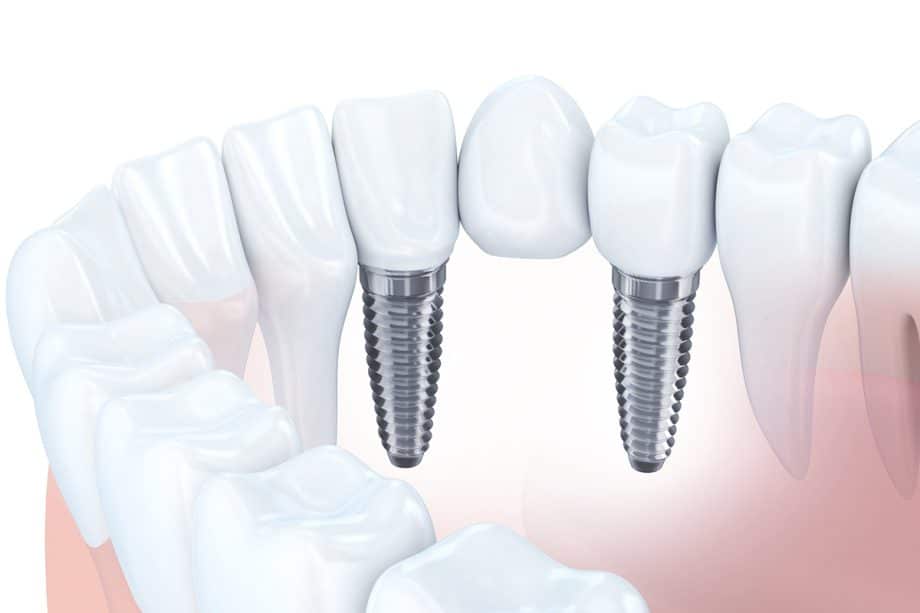A dental bridge is a tooth replacement solution for one or more missing teeth. It is one of the easiest, most common ways to replace lost or severely damaged teeth. A single bridge can replace one or a few teeth in a row.
If you’re considering getting a dental bridge, you probably have some questions about this dental prosthetic and how it works. Here’s what you need to know.
How Does a Dental Bridge Work?
A traditional dental bridge uses existing healthy teeth for support. It looks like a row of artificial teeth that are all connected, but each end is a crown that is designed to fit over the teeth on either side of the gap. The enamel of the healthy teeth is reduced and the crowns are cemented in place over the top with one or more pontics (artificial teeth) suspended between them. The pontics sit on top of the gum tissue in the empty space.
Types of Dental Bridges
There are a few different types of dental bridges:
- Traditional. A traditional bridge is the type described above that uses two healthy teeth fitted with crowns to anchor the bridge in place.
- Cantilever. A cantilever bridge is used to replace the last molar in the back of the mouth. It consists of a crown that fits over the next to last molar with a pontic attached to it to replace the back molar.
- Maryland. A Maryland bridge is supported by metal clasps that are cemented to the existing teeth. This prevents the need for crowns and preserves the enamel of the healthy teeth, but it is less secure than other types of bridges.
- Implant-supported. When several teeth are missing in a row, an implant supported bridge may be used. Dental implants are placed in the jaw at each end of the gap that provides support for the bridge. This type is ideal for replacing a larger number of teeth.
What is a Dental Bridge Made Of?
Dental bridges are typically made of porcelain. Porcelain is a specially manufactured type of ceramic that is strong enough to withstand the force of chewing. It resembles natural tooth enamel in texture, and it can be customized to match the color of your existing teeth.
Benefits of Dental Bridges
Dental bridges offer many benefits as a tooth replacement option:
- Affordable. A dental bridge is one of the most affordable tooth replacement options. It provides an option for patients who can’t afford dental implants.
- Works with Minimal Jaw Bone Density. When a tooth is missing for a while, the bone structure in the jaw weakens and resorbs, meaning dental implants are not possible. A bridge does not require a certain amount of bone density to be effective.
- Quick, short term solution. A bridge can be placed relatively quickly in just a few appointments, as opposed to dental implants that take months to complete.
Are Dental Bridges Covered By Insurance?
Another benefit of dental bridges is that they are typically covered by insurance. Dental insurance plans don’t typically cover dental implants because they are considered to be cosmetic in many cases, and because dental bridges offer a lower cost replacement option.
Glassman Dental Care Provides Dental Bridges
If you have one more adjacent teeth that need to be replaced, Glassman Dental Care provides a variety of dental bridge options. Our dental bridges are made of high quality porcelain that provides a natural appearance and function.
Call 212-787-4860 or contact us today to learn more and schedule an appointment.

